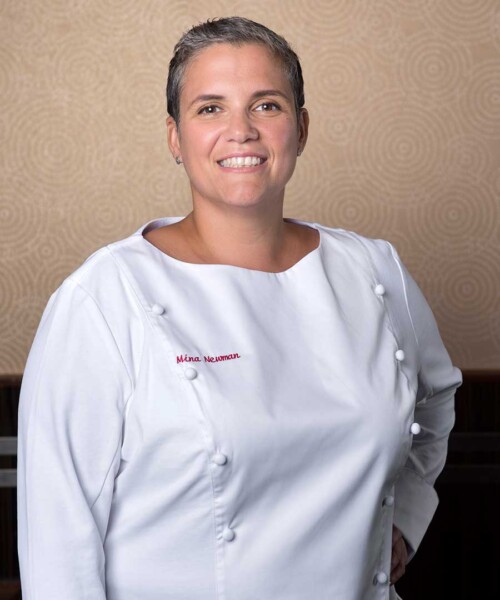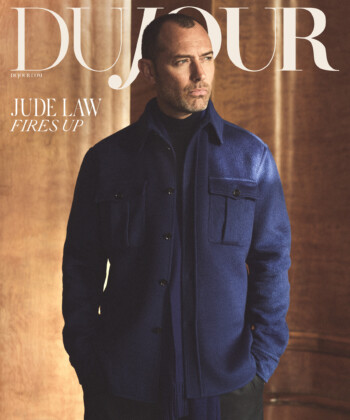When I meet Mina Newman, executive chef of Japanese-Peruvian restaurant Sen Sakana and in-house caterer at New York City’s Edison Ballroom–not to mention the winner of the reality television show Chopped in 2009–she gives me a strong, firm handshake. This is the same woman whose delicate touch promises perfection at each and every wedding she curates the menus for.
When Newman caters a wedding at the Edison Ballroom, her clients are given her personal phone number. There seems to be no request too big or out of reach.
One couple Newman worked with met at at a noodle bar, and so she incorporated a hand-pulled noodle station in their reception. She’s had basil flown in from Israel. For one wedding, Newman was asked for rare white strawberries from Japan–and she delivered. (Each strawberry costs $25.) But the most extravagant wedding she’s catered, Newman recalls, is also her favorite: freshly shaved truffles were on every table, to be served as often as the guest wanted; mother of pearl spoons; a martini bar made from ice; drinks served with caviar. “They also wanted French fries,” Newman adds with a smile and shrug.

The Edison Ballroom.
When choosing your wedding reception’s menu, Newman urges couple to go for standby crowd-pleasers like filet mignon, but will work with the couple to make their wildest dreams come alive. (Remember the $25 strawberries?) She also tries to gently guide her clients away from serving anything out of season. “If [a couple] says, Oh, it’s October or January and I want to have a tomato salad, I’m like, Well, maybe that’s not so hot.” But always ready and willing to make her clients happy, she’ll do what she can. If they want burrata, she’ll say, off the top of her head: Okay. Let’s try it with balsamic poached butternut squash.
That’s not to say she doesn’t advise against certain wishes. “I always try to steer [the client] clear of risotto as a first course. By the same token, polenta. Because for 300 people, it’s impossible for every bowl to be perfect. You don’t [want it] to be dry or overcooked. It’s a difficult feat.”

Edison Ballroom sushi station.
When I asked Newman if she felt it difficult to create creative dishes for weddings under dietary restrictions, she replies matter-of-factly. “You know, years ago, [I would have said] yes. But now it’s just part of the fabric.” Whether trying to work around fad diets, dietary practices, or allergies, Newman admits she used to think, Fruit plates for everybody! but has since found it a lot easier to plan around the restraints. Her kitchen has completely stopped using nuts–they once served a walnut salad that has since been discontinued–due to the severity of nut allergies; human error makes contamination almost unavoidable. While no wedding has ever required a menu to follow one diet religiously, every menu does require options for guests; Newman has contingencies for every preference to be catered to. For vegans, she’s cooked up a crowd-pleaser in the form of a quinoa fried rice. “[It’s] a complete assortment of vegetables and red, white, and black quinoa. I make a sauce with garlic and soy sauce and then we fry it up. And if they’re gluten-free, we’ll do a gluten-free soy. People love that dish. I love that dish.”
As for trends she’s forecasted for 2020? “I see cheese fondue,” she says. “I always think that chocolate fountains are going to go out [of style], but people keep ordering them. And ice sculptures are making a comeback.” She laughs, remarking that many clients will claim ice sculptures are too ’80s. “I love them. I love the artistic ability.” Newman also emphasizes the benefits of interactive stations; a “station vignette. It’s going to be small little stations that only do one thing.” For instance, one station will have sliders, another with condiments, and so on. Newman also thinks dessert tables are going the way of the dinosaurs. “They’ll cut the wedding cake. People will have cake, and then instead of, let’s say petit fours, they’ll have a cheese and charcuterie plate.”






































